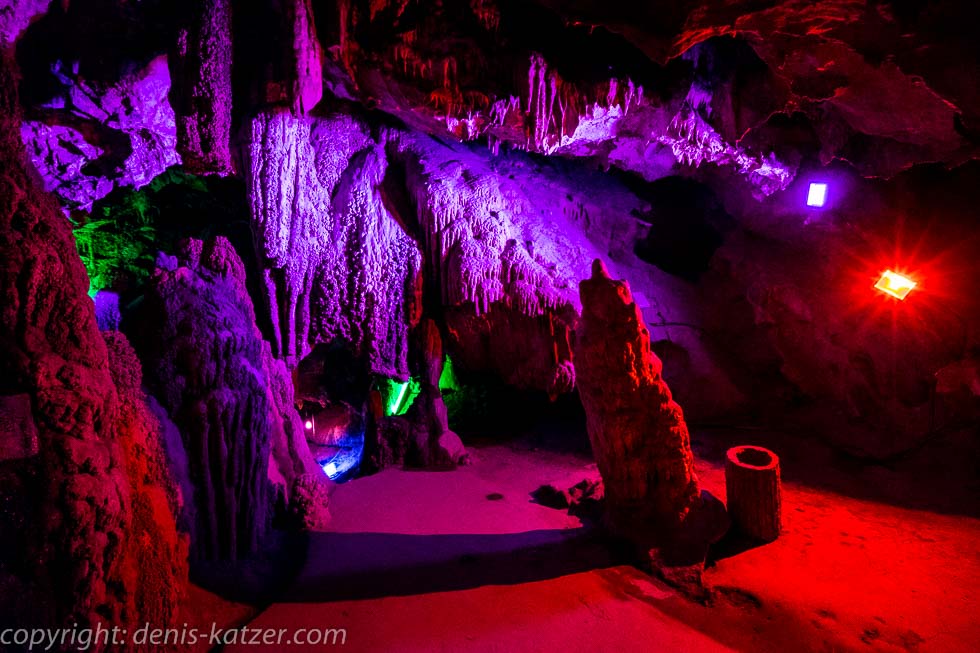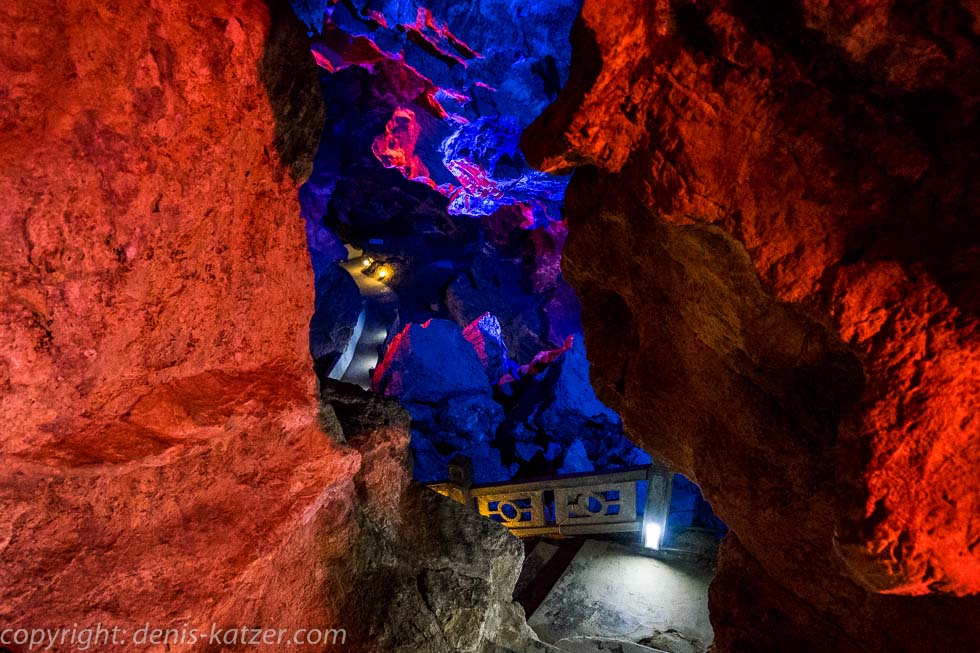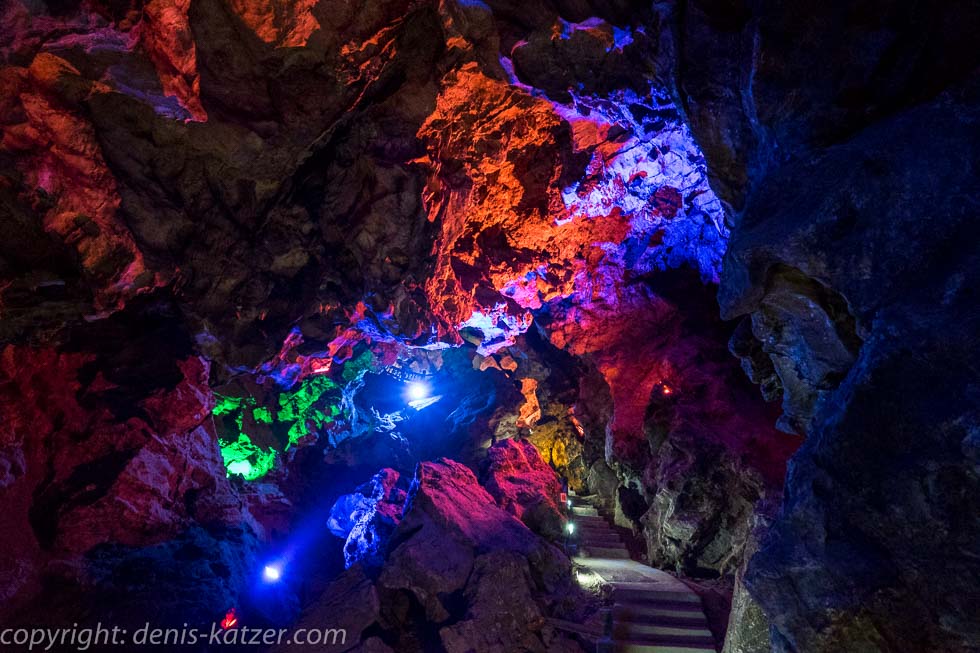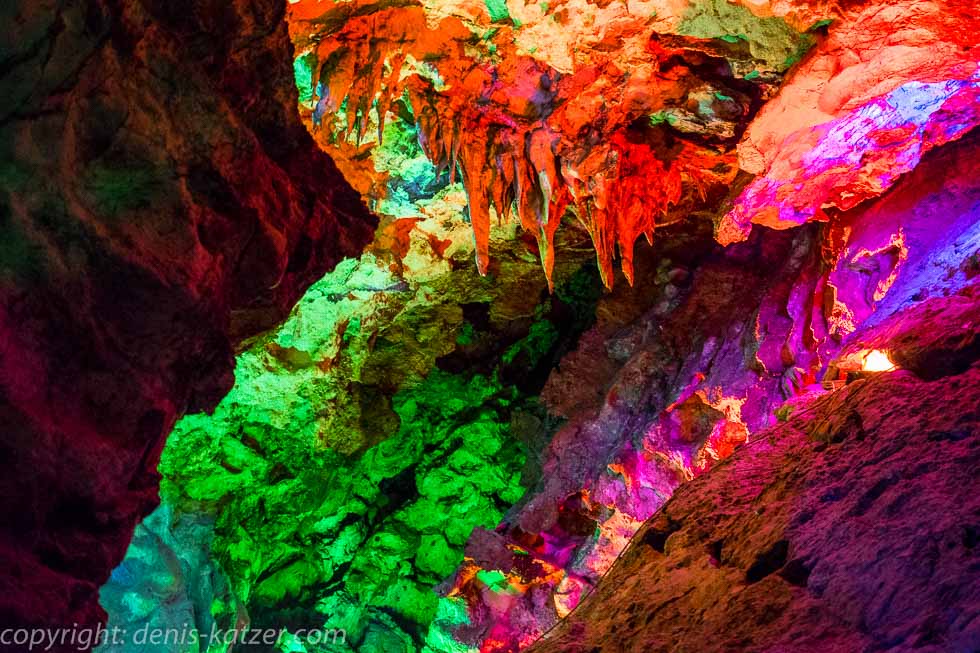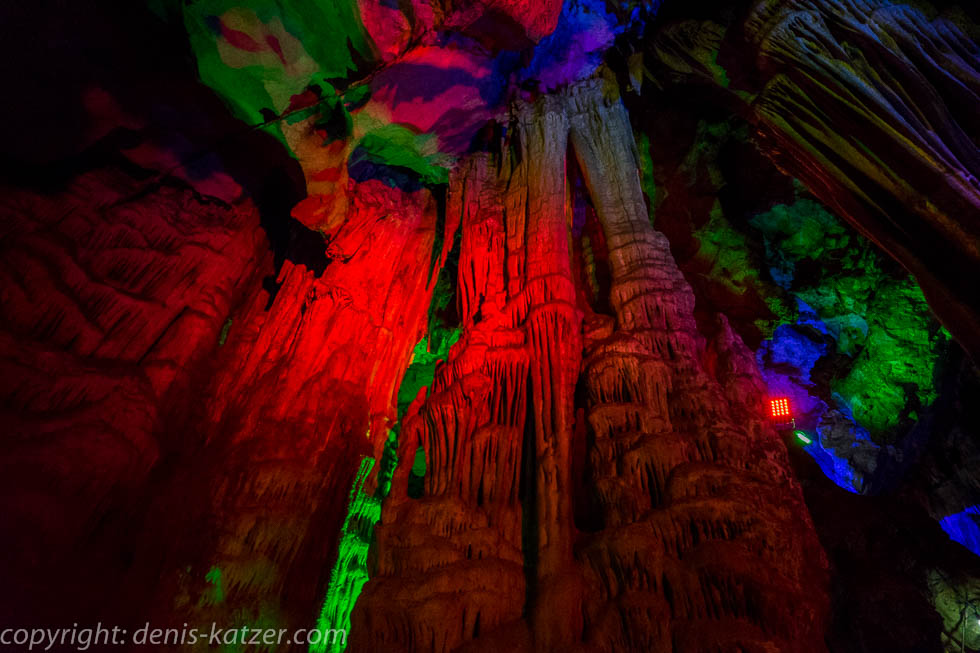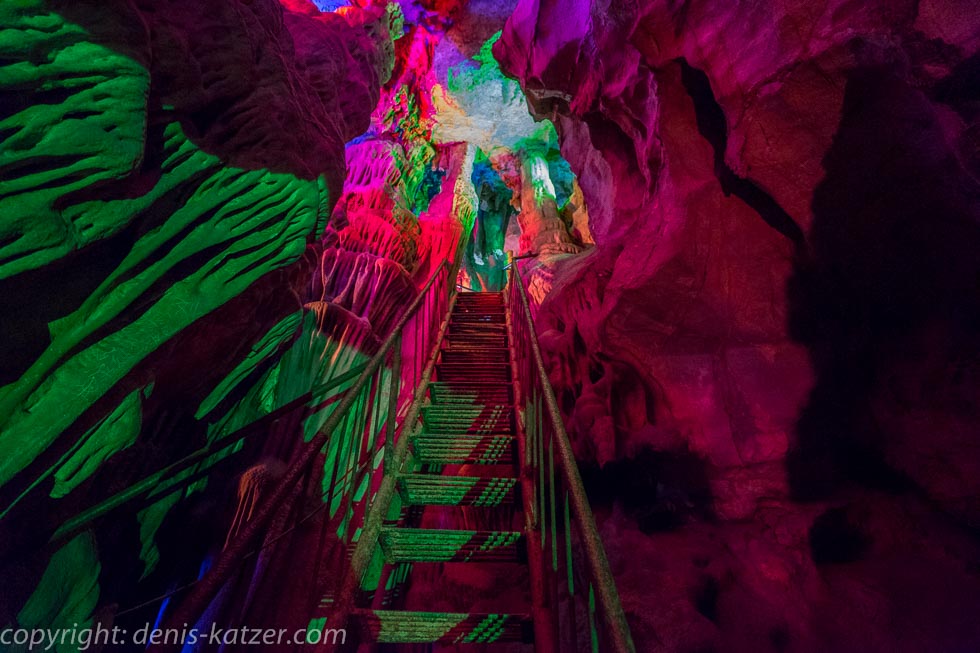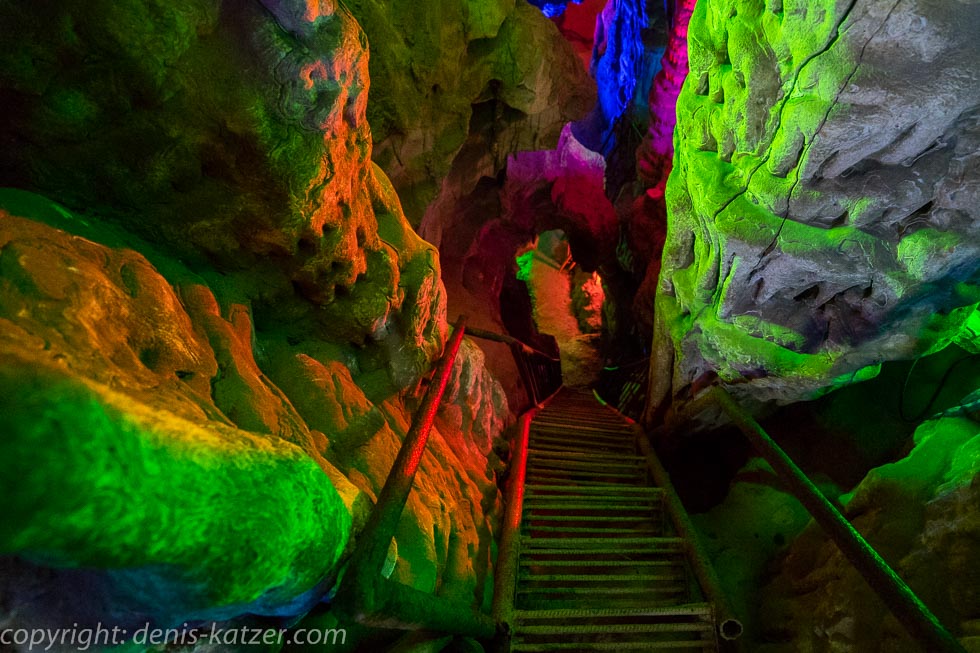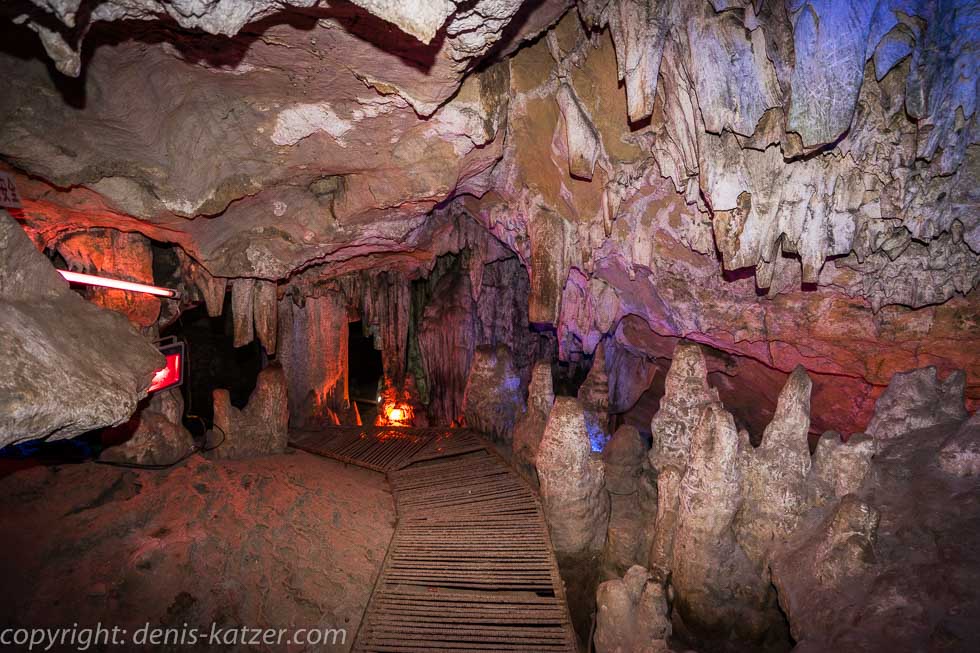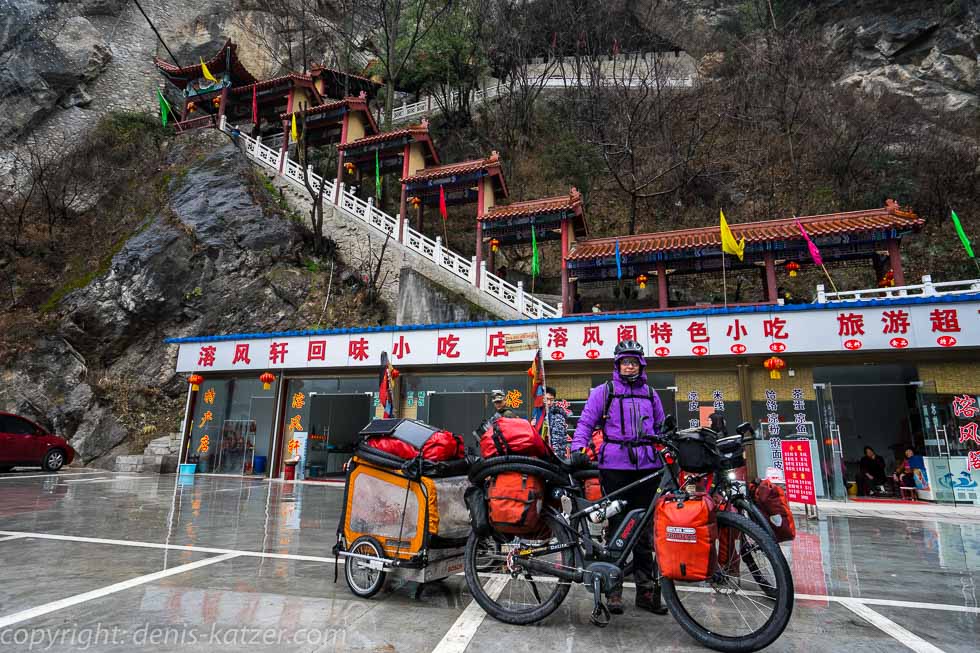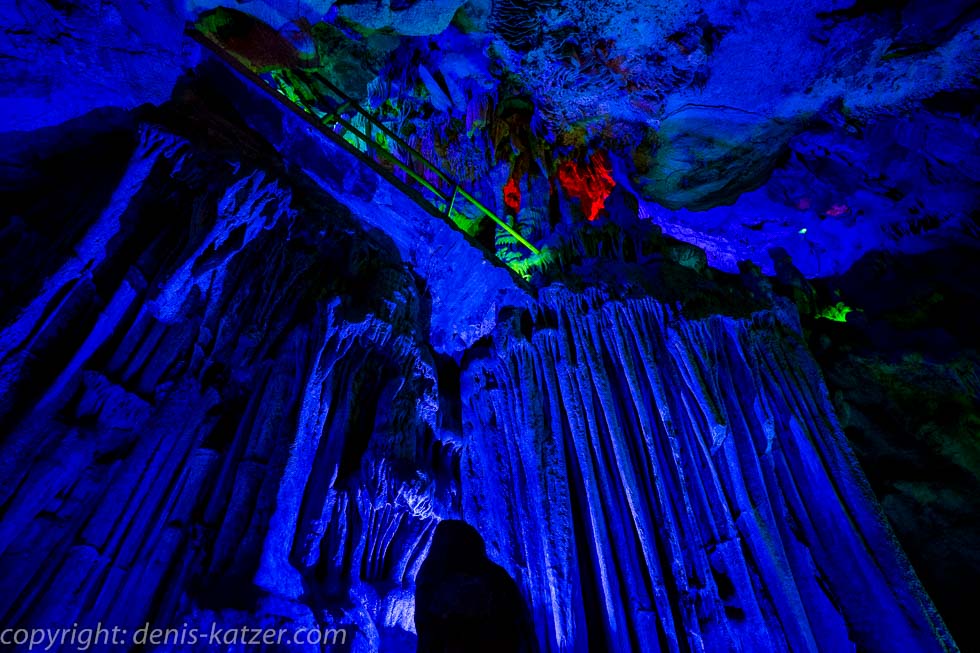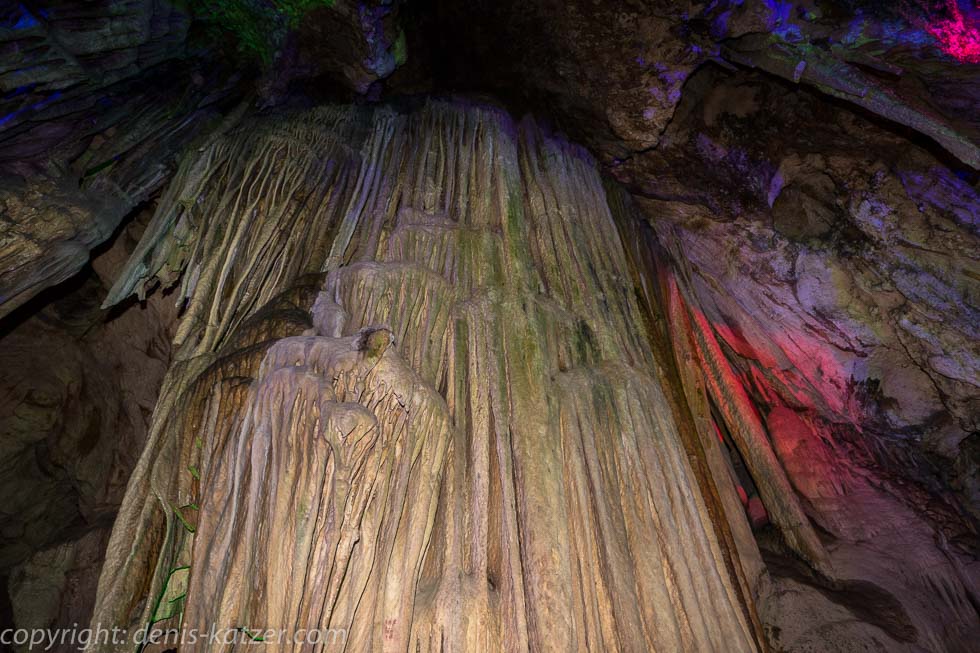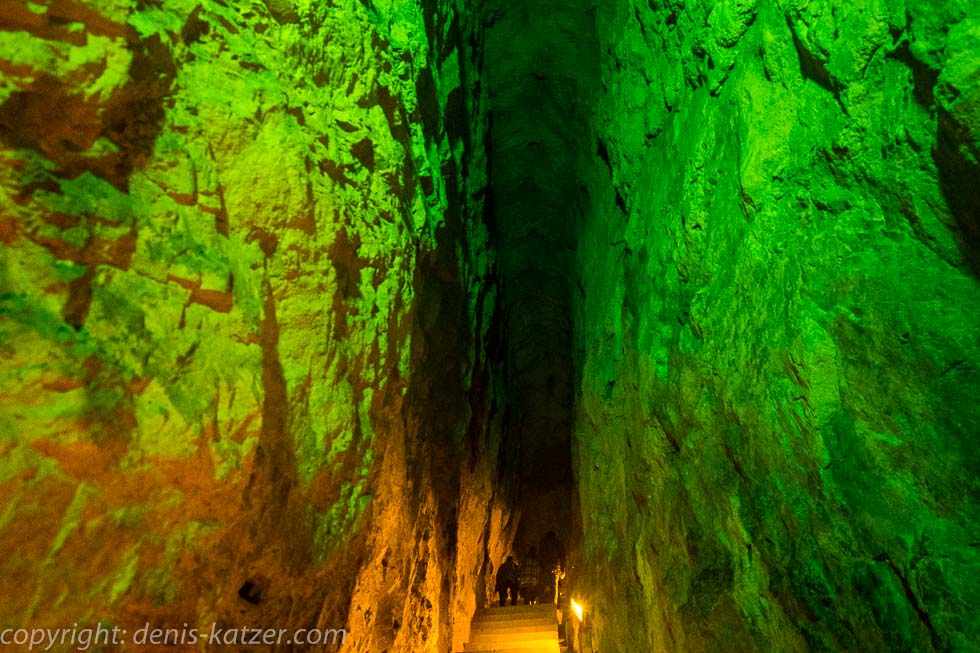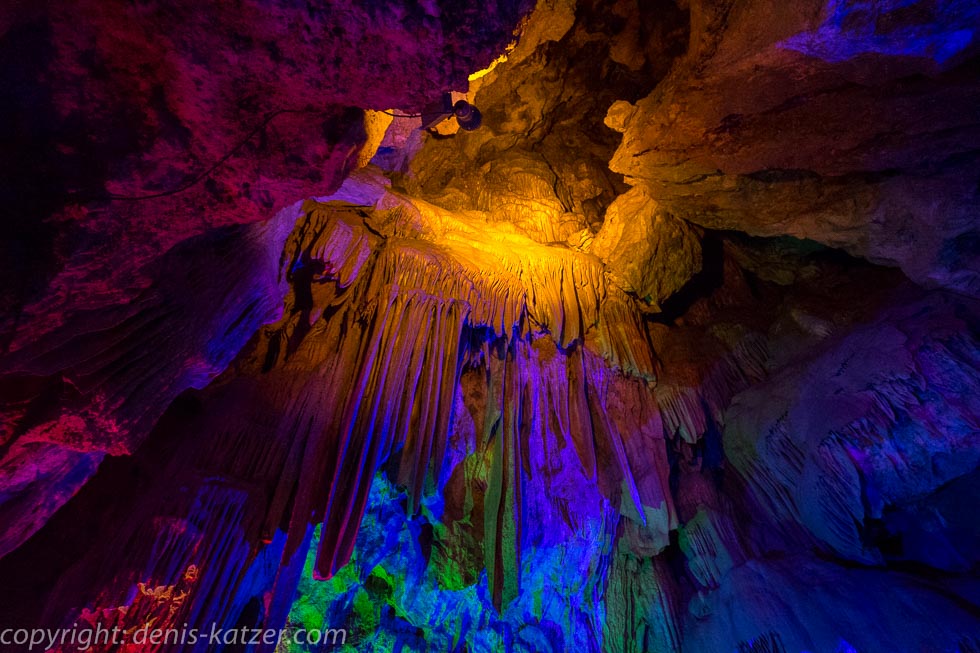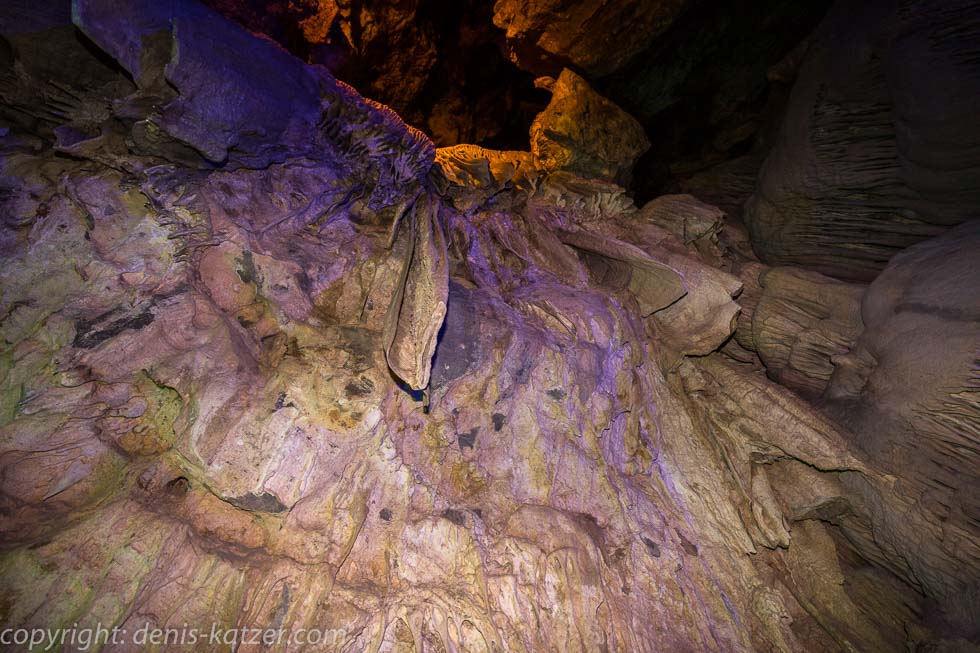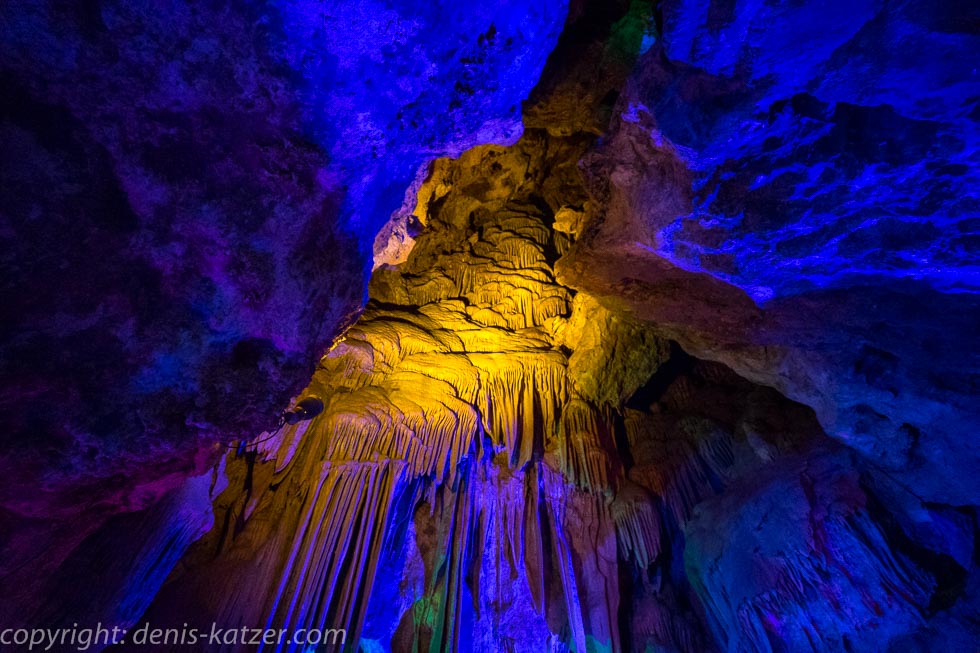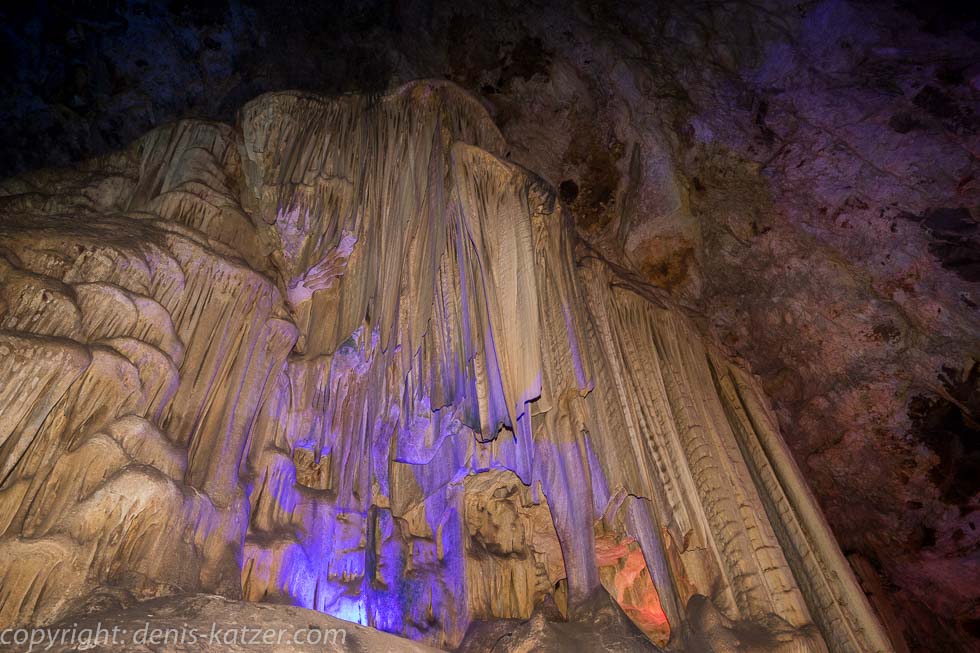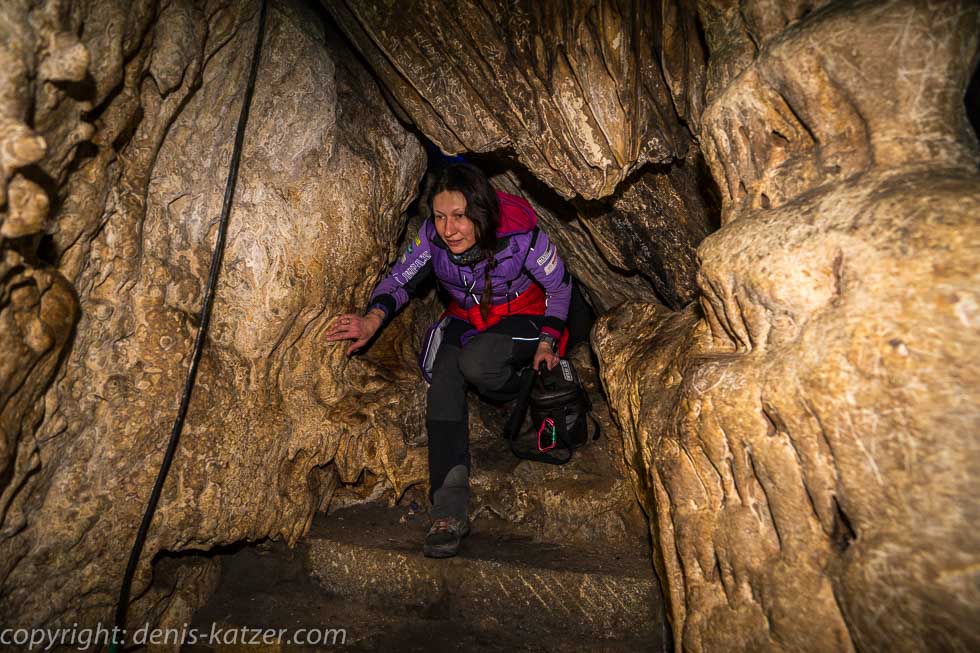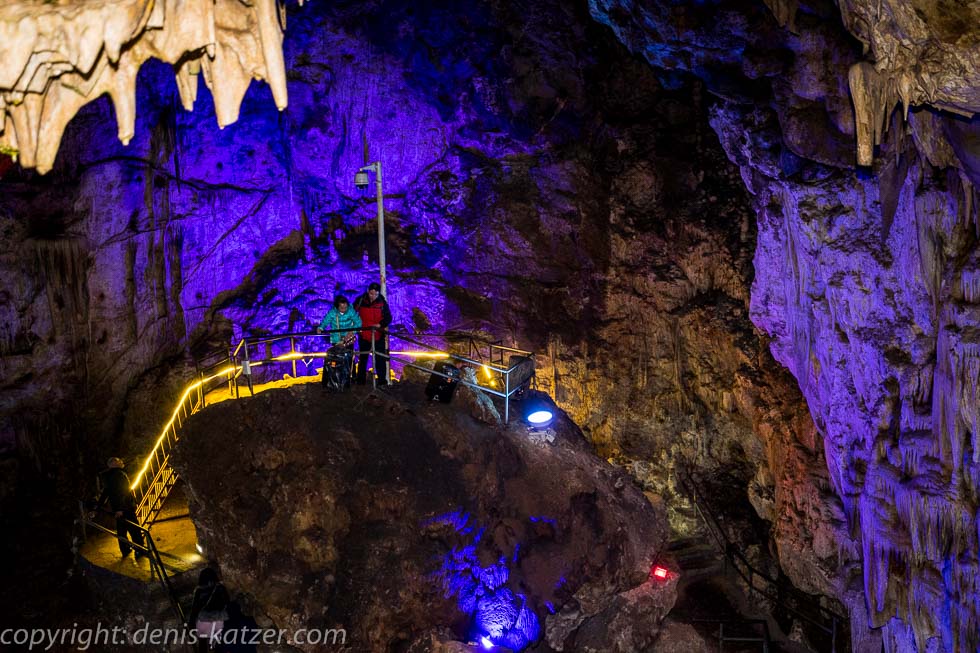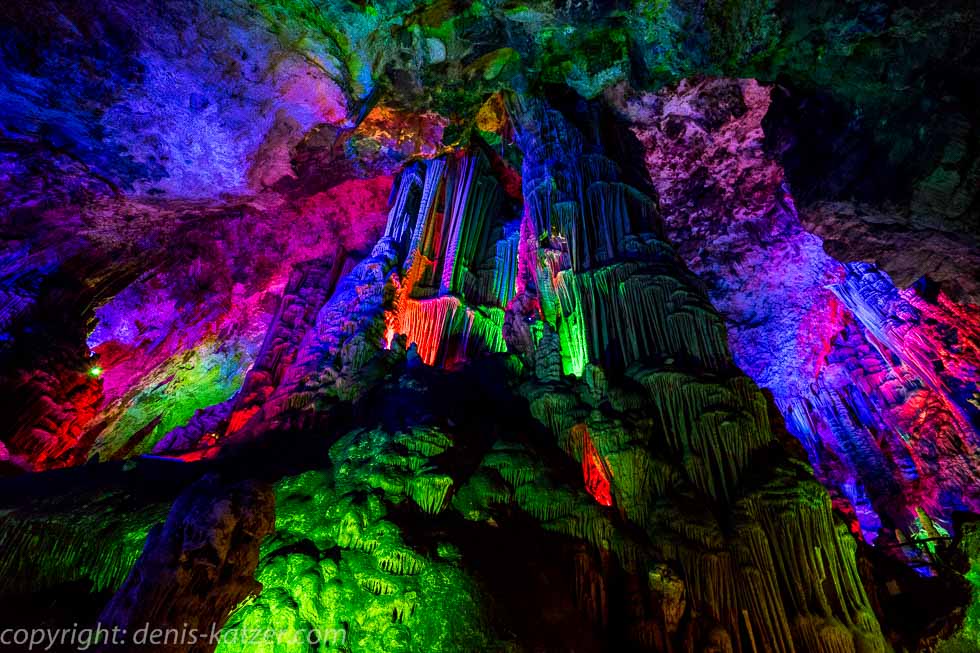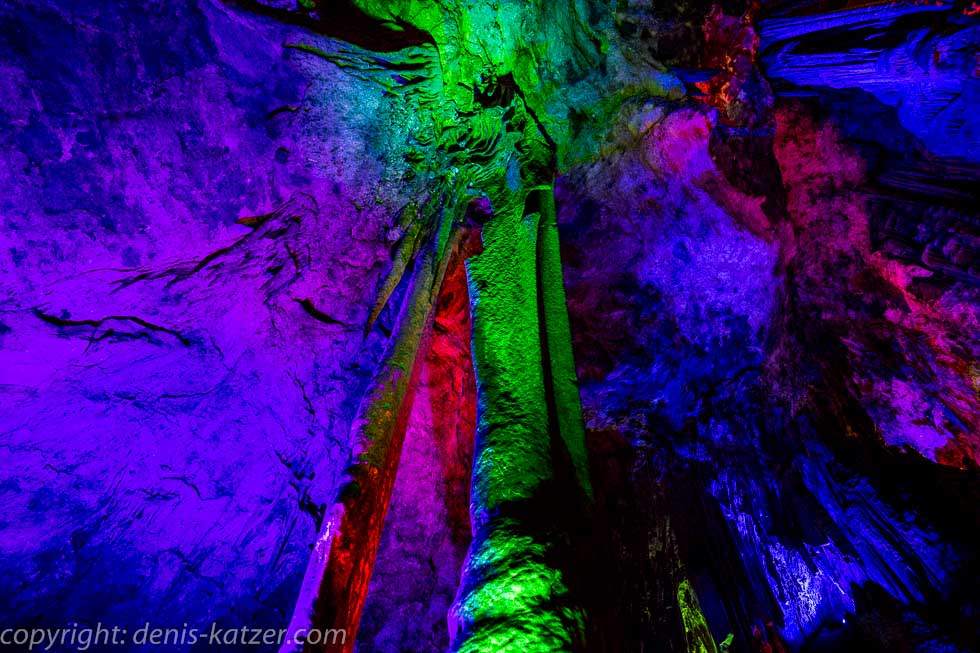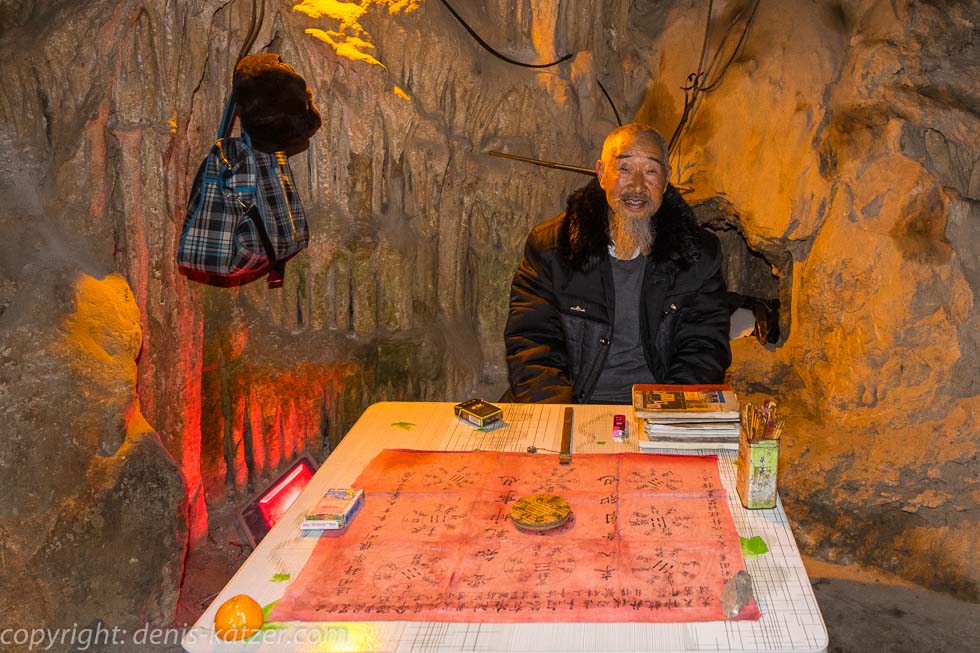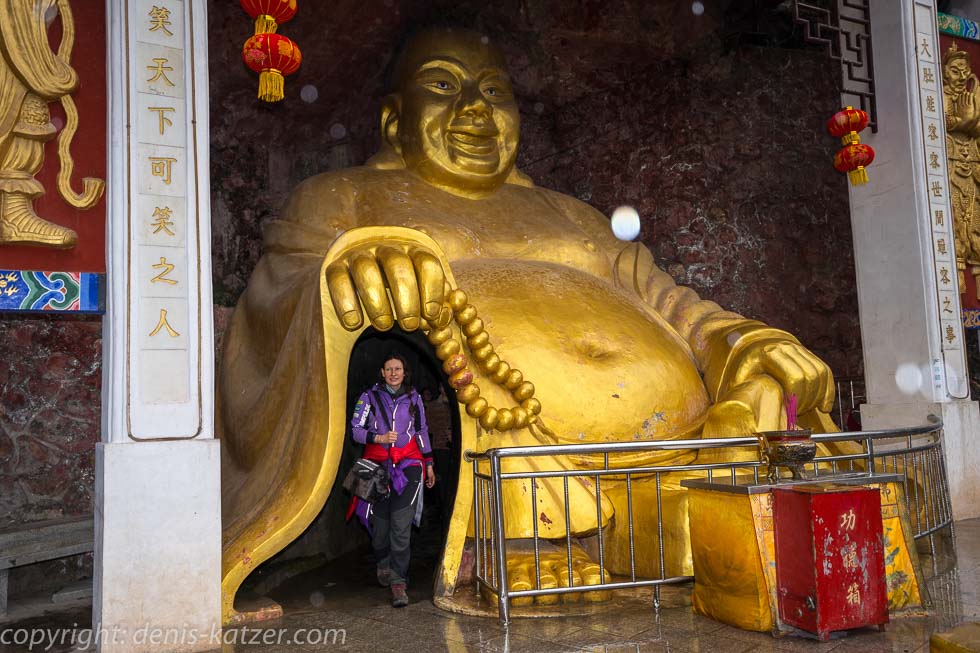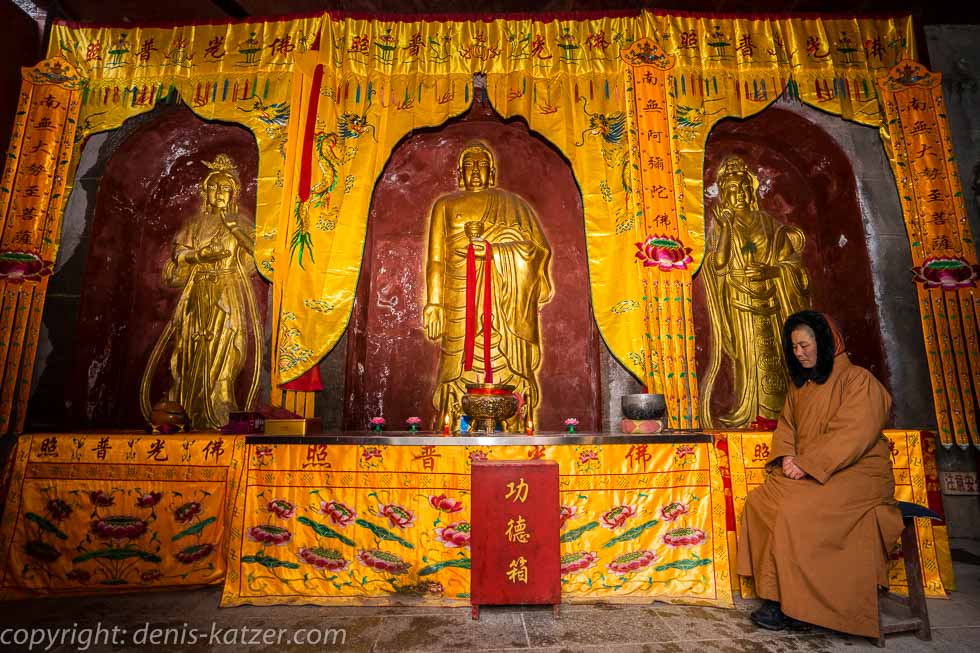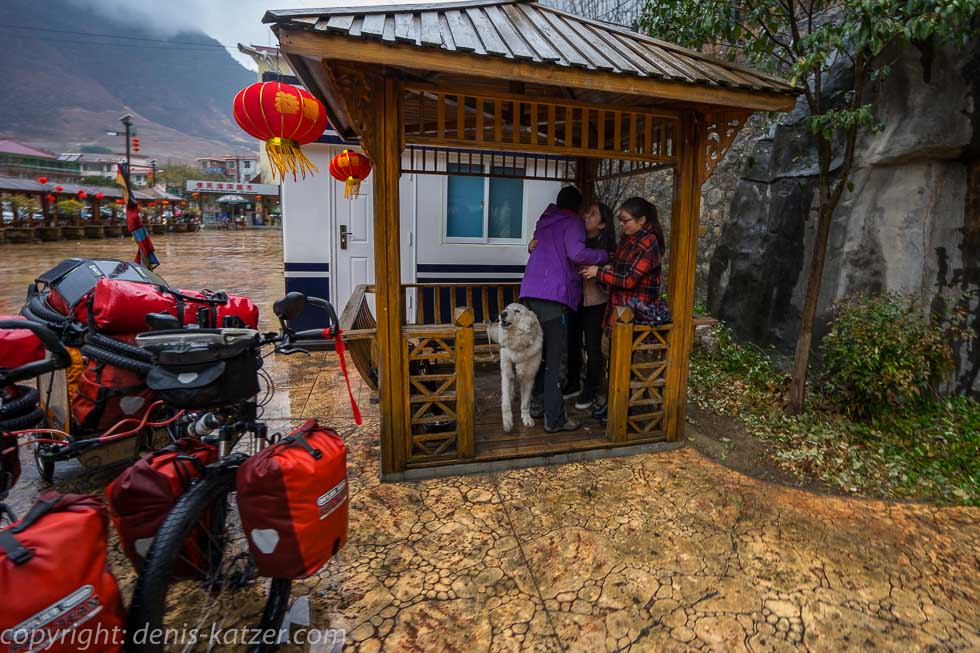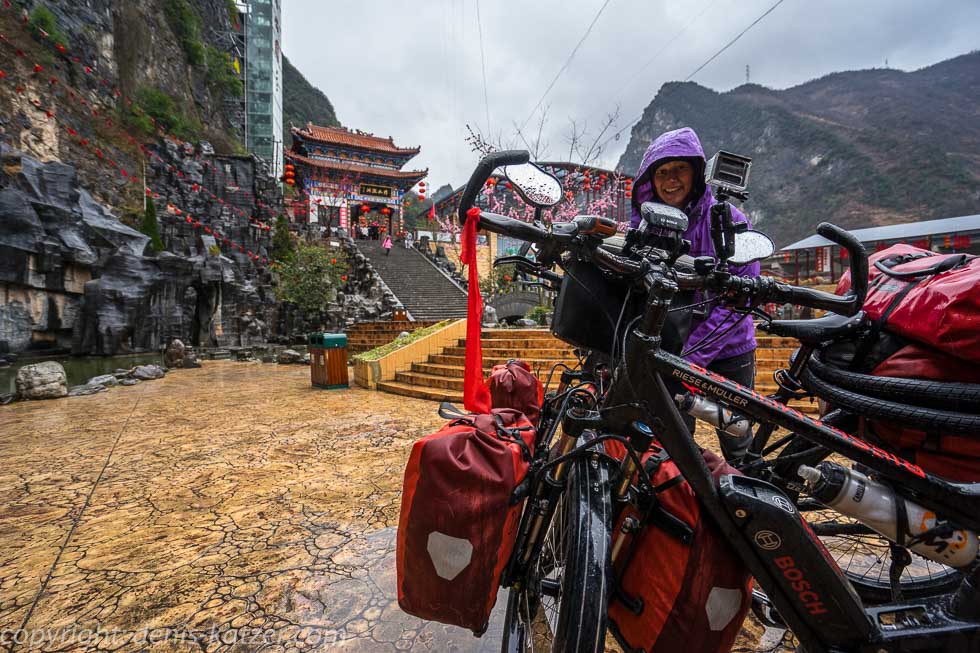
Sleet and alone in the dark world
N 33°25'08.2'' E 109°09'55.4''
Date:
12.02.2016 until 14.02.2016
Day: 228-230
Country:
China
Province:
Shaanxi
Location:
Zhenan
Latitude N:
33°25’08.2”
Longitude E:
109°09’55.4”
Daily kilometers:
61 km
Total kilometers:
12,008 km
As the crow flies:
22.78 km
Average speed:
22.3 km/h
Maximum speed:
45.9 km/h
Travel time:
2:44 hrs.
Soil condition:
Asphalt
Maximum height:
1.200 m
Total altitude meters:
17.412 m
Altitude meters for the day:
664 m
Sunrise:
07:31 am – 07:29 am
Sunset:
18:23 – 18:25
Temperature day max:
3°C
Temperature day min:
1°C
Departure:
09:45 a.m.
Arrival time:
5:30 pm
(Photos of the diary entry can be found at the end of the text).
While we pack our bikes, Ajaci plays with the hotel’s resident poodle in the reception hall. When Ajaci becomes too dominant, the little one pisses on the dog trailer without further ado. “Hey, you’re crazy!” I shoo him away because we don’t want Ajaci’s caravan to become the urinal of all street dogs from now on.
We are just about to start pedaling when a Chinese family, who have also stayed at the hotel, give us apples. “It’s really fantastic what they’re doing,” says the father of two daughters, giving a thumbs up. “Xie xie”, we say thank you and cycle off into the rainy, wet day. For the first few kilometers we follow a completely contaminated river in which everything that can no longer be used ends up. The route then climbs steadily back up to an altitude of over 1,200 m. The long descent is unpleasant, despite the four woolen shirts of different thicknesses, a windstopper vest, windstopper jacket and rain jacket, woolen underpants, overpants for extreme minus temperatures, and our rain pants. The winter gloves are soaked from the constant snow, which is why we hardly have any feeling left in our fingers. The chill factor during the seemingly endless descents is enormous and lets us cool down completely. “Oh, how I loathe the constant cold now.” We reach the valley shivering. Large signs indicate a tourist attraction. Buddhist buildings are built into a steep, mist-shrouded rock face. “Looks like there are a few stalactite caves to visit up there,” I say, pointing to one of the brown signs. “Shall we have a look at these?” asks Tanja. “Hm, we should,” I answer a little hesitantly because I don’t feel like going out in this awful weather. But as we don’t just want to cycle through China, we want to discover it for ourselves, and the many bilingual signs promise something special, so we park our road trains in front of one of the many small restaurants. The glass doors of the food vendors are wide open to welcome the few guests who have found their way here in this weather. The cook and her son offer us a seat on the wobbly chairs in their Frostburg. We are quickly served a hot noodle soup, which warms us up a little. “For the life of me, I can’t understand why the Chinese leave the restaurant doors open even in winter,” I wonder once again during this trip. Tanja and I are convinced that this must have something to do with positive fengshui. Closed doors tend to turn guests away. That’s why some restaurants open their doors to welcome guests, no matter how cold it is. When one starts, the store next door must also be open so as not to be at a disadvantage. As a result, most food providers leave their guests freezing. As the Chinese usually see eating out as a pure food intake and not as a cozy get-together and enjoyment, they leave the usually grotty rooms while the rest of the soup is still steaming in the bowl. And every one of the locals is wrapped up in thick down jackets while eating. “Would you like to warm up a little at the cabbage sink?” asks the landlady when she sees us freezing. “Gladly”, we reply, whereupon the woman pushes a metal bowl under the table in which a few lumps of coal are glowing. The rising heat builds up under the plate before it dissipates into the cold room and actually warms our limbs a little.
Because one of us has to look after Ajaci and the bikes during the cave tour, we can only go one after the other. So I set off first, buy a ticket and leave my two in the cold bunker.
Because of the many steps up to the cave entrance, I quickly get warm. I don’t expect too much from the stalactite cave, because the only visitors with me are a few bats fluttering around. But it’s probably more due to the uncomfortable weather, with only a few tourists making their way here. In a narrow, illuminated tunnel, I penetrate into the interior of the mountain and can hardly believe my eyes. The sight of the pointed stalactites hanging from the cave ceilings and the blunt stalagmites growing towards them from the floor is absolutely breathtaking. In some parts of the caves, the stalactites have grown together in the middle to form a real column. Spotlights bathe the bizarre rock formations in red, blue and green light. I walk and climb deeper and deeper into the damp underworld, photographing and marveling. A few Chinese characters show me the way. I follow steps carved into the rock downwards. I am surprised to discover a Buddha shrine there. It looks like part of the cave was used by monks for meditation a long time ago. Climbing upwards again, I clamber deeper and deeper through winding corridors and meandering tunnels into this strange world. Suddenly I’m standing in front of a rusty steel ladder that leads almost vertically into a towering chimney. I carefully climb the iron frame. Since it looks like I’m the only one in here, I don’t want to slip on the slippery thin steel pipes and fall into the depths under any circumstances. Who knows if the cave staff would find me there and if so, when? “Should have brought my headlamp,” I think to myself. Then I crawl through a low corridor that leads me to a high hall. Fascinated, I look up at the huge icicle-like shapes hanging from the ceiling – you’d think they were rivers cast in stone. The water running through the limestone over thousands of years has eaten deep furrows and gullies into them, shaping them into fantastic, almost indescribable beauties of the dark world. I carefully follow a tunnel at the end of which black darkness beckons. Although visible steps and stairs indicate that this path was created for visitors, it gets darker and darker. To go on here without a pocket lame would border on nonsense. “The lighting has probably failed,” a thought crosses my mind. Without further ado, I turn around and follow another, more promising route. In the meantime, I have to admit that I no longer know exactly where I am. “They’re not going to let tourists into a labyrinth of caves where there’s no obvious exit, are they? Did I accidentally take a side passage? Did I overlook a barrier?” Now a little nervous, my steps quicken. Water rushes through a gap next to me. A few meters further on, I hear the echo of falling drops splashing in a lake deep below me. I look down through a grille. “I wonder if there are cave elms or salamanders there?” I ask myself, because I once heard that very special creatures live in such caves, which are more or less blind due to the lack of light and only have very weak pigmentation. I would love to photograph such a rare creature. I walk attentively over the wet ground and keep an eye out for spiders, insects and cave crickets, which feed on tiny creatures and rotting organic matter washed into this strange world from outside. Suddenly I think I hear the soft whirring of a bat again. It actually flutters through the spotlight around one of the colorfully illuminated stalactites. It orients itself using ultrasonic localization, emitting high-frequency sound pulses that are reflected as echoes from its surroundings and picked up by its large ears. In this way, it always knows its position or where an insect is that it is currently hunting in order to eat it, despite absolute darkness. I am a little relieved, as these flying animals often don’t stay too far from the cave exit or entrance.
Just a few hundred meters later, dull daylight enters the tunnel. I walk towards him and, after more than an hour through the dark world, am greeted by a cold, damp drizzle. “Wow, what an extraordinary and unexpected adventure,” I say to Tanja. “You mean it makes sense for me to look at it?” “Of course it does. Absolutely. You just have to follow the signs. There are corridors where the lights are out. You mustn’t follow them. It’s best to take a headlamp with you.”
While Tanja now visits the world inside the mountain, I sit down with the mother and son of the restaurant at the small brazier to warm ourselves as best we can. Our conversation is rudimentary but we can communicate as far as possible. When Tanja returns, she is also delighted. We briefly exchange our experiences and continue our journey. As soon as we start pedaling, more signs point to apparently even larger caves. “Shall we have a look at them too?” I ask Tanja. “As long as we’re here. Why not?” she replies, whereupon we take the turn-off and arrive at a large parking lot a little later. Due to the persistent rain, we take shelter under a small wooden pavilion and learn that the tour of these, in fact much larger, stalactite caves takes at least two hours. “If we want to look at them separately, we won’t be able to do it today,” I say thoughtfully. Tanja asks a policeman if we can park our bikes somewhere. “And what do we do with Ajaci?” I ask. A young Chinese woman runs over. She offers to look after Ajaci and the bikes while we take a look at the caves. “I don’t know if that’s a good idea?” says Tanja uncertainly. “Hm, the question is whether we can entrust all our possessions to a complete stranger?” I ponder doubtfully. “You don’t have to worry. I really do take care,” replies the young woman called Molly. “And what if they have to go to the toilet in the meantime? Then Ajaci and the bikes are unattended,” Tanja replies. “I don’t need to go to the toilet. Under no circumstances should you miss out on these famous stalactite caves. You really would be missing out,” Molly tries to convince us. We are torn between the two. Don’t know if it’s worth the risk of losing everything just because we trusted too much once. Although we believe in the good in people, we have often been cheated on our travels. “What does your gut say?” asks Tanja. “Nothing. It says nothing. It’s absolutely neutral.” After a lengthy back and forth, we decide against the tour. “Maybe we can take the bus back here tomorrow,” I think, as we want to take a day off in the next town to relax a little. “Yes, that’s a good idea. So let’s get going,” says Tanja. In the meantime, three policemen have joined us, who also confirm that they can leave the bikes here without any concerns. Again we become uncertain and think about it. “And you work in administration here?” Tanja wants to know from the helpful Molly. “Yes, I will,” she says with a friendly laugh. We ask ourselves why a person, without wanting anything from us, shows so much commitment just so that the foreigners can have a nice afternoon? “We can trust her,” I finally say with conviction, whereupon we strap our document bag around our hips, leave Ajaci, the bikes with cameras, laptops and everything else, behind and trudge off. “And you’re really sure?” Tanja asks again. “I think we’ve made up our minds. So let’s finally take a look at these caves,” I reply.
In fact, the karst caves are many times larger and even more impressive than the ones we had visited before. We are not the only ones here either. In the high halls and narrow corridors, the shouts and conversations of visitors echo from rock face to rock face. Despite the large number of people, we are truly blown away by this gigantic natural spectacle, the largest stalactite cave we have ever seen in our lives. After two hours, we leave the cave under the right hand of an oversized Buddha statue that has been converted into an exit. As many of the tourist attractions in China are somewhat similar to Disneyworld, a slide has been built here. This means that visitors do not have to climb down the many steps, but can simply race down into the valley on an abrasion-resistant apron. “We should treat ourselves to this fun too,” I suggest. “Do you really think so?” “Sure,” I reply, buy two tickets, get a slide apron tied around our necks, climb into the polished metal tube and hurtle down through many steep bends to the sound of loud laughter and cheers.
When we arrive at the bottom, our nervousness increases. “I’m sure everything went well,” I reassure us, hurrying towards the point from where we can see the pavilion. When we recognize Ajaci and the bikes, it takes a load off our minds. Our dog howls with joy as loud as if he hadn’t seen us for a year. Tanja falls around the Chinese woman’s neck with gratitude. “I really, really enjoyed doing that. Your dear dog has passed the time, she says, pointing to her friend who has kept her company in this cold and wet weather…
The live coverage is supported by the companies Gesat GmbH: www.gesat.com and roda computer GmbH http://roda-computer.com/ The satellite telephone Explorer 300 from Gesat and the rugged notebook Pegasus RP9 from Roda are the pillars of the transmission.
